Get Wild: 4 Ways to Rewild Your Outdoor Space
Along with kombucha and succulent terrariums, one of the latest trends (old trends) in home design is rewilding. “Rewilding” means allowing your yard and the rest of your land to grow naturally, replacing imported plants with native species, and generally encouraging wildlife to thrive. Not only does this practice create beautiful outdoor spaces, it’s also good for the environment.
If you’re curious, check out this interview with novelist Jeff Vandermeer, in which he talks about how he and his wife “rewilded” their yard. Rewilding doesn’t have to involve a major re-haul of your property’s exterior. As Vandermeer says, “You can always do something. Even a few potted plants that your local nursery says are good for butterflies or birds can be of use. Even a small bird feeder can be of use, too.”
You can rewild your yard no matter the size. And luckily, the Pacific Northwest hosts some of the lushest, most diverse wildlife in the world. If you’d like to find the kind of home where you can practice rewilding your property, or if you’re interested in other real estate, let Pickett Street know—call or email at (425) 502-5397 or info@pickettstreet.com.
Here are five simple ways to turn your outdoor space into a thriving landscape.
Replace imported species with native plants.
Research and invest in plants native to your area. Here’s a great resource for reading about plants native to Washington state. For moist, partly shady yards, King County’s native plant guide suggests maidenhair ferns, Oregon grape, indian plum, and huckleberry.
Additionally, you might research which animals and birds are native to, or migrate through, your area. The Washington State Department of Fish and Wildlife provides detailed information about native and invasive species.
Stop mowing your lawn.
While a perfectly manicured lawn can look pretty, this landscaping trend takes a harsh toll on the environment. In the U.S., lawns consume about 3 trillion gallons of water a year, 200 million gallons of gas (for mowing), and 70 million pounds of pesticides.
However, there are many beautiful alternatives to lawn. You can enlist a professional landscaper to help you replace grass with native shrubs, trees, and flowers. You could start a wildflower garden with native seeds. Or, you might plant ground-cover; groundcover plants native to Washington include wild ginger, Italian clematis, orange honeysuckle, and wintercreeper.
Make a pond.
Building a pond is a great way to attract birds and other wildlife to your yard. According to the Nature Conservancy, “a fountain or dripping mechanism will alert passing birds to the presence of water, so adding an element of sound will enhance the sensory experience of the pond and serve as a welcome mat.”
This pond doesn’t have to be large, and the U.S. Department of Agriculture offers some great DIY tips for adding environmentally friendly water features to your yard.
Decorate your concrete.
If you live in a home without a yard, you can still create a green outdoor paradise. Arrange native plants such as flowers, herbs, or even vegetables in pots. You might also squeeze shrubs along your driveway, or find ivy to climb up the exterior walls.
For inspiration, check out this zen-like yard in Seattle and this garden paradise in Portland. For more real-estate related information, get in touch with Pickett Street at (425) 502-5397 or info@pickettstreet.com.
New: Get Wild: 4 Ways to Rewild Your Outdoor Space
Posted on Mar 16, 2020
